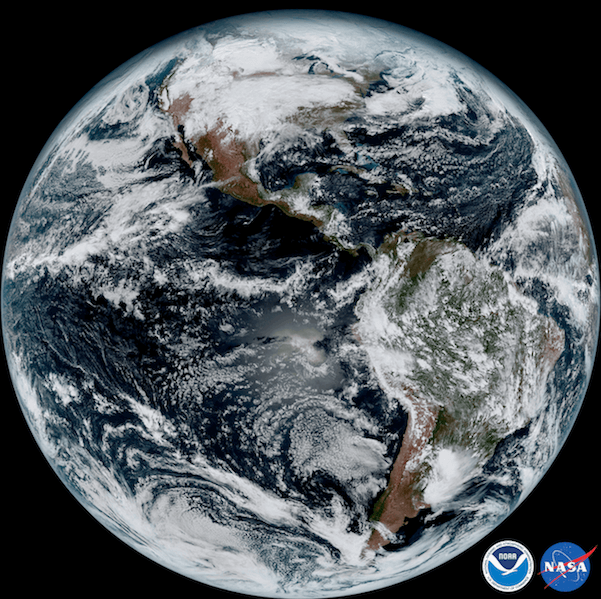
Meteorologists are drooling. This release coincides with the first day of the American Meteorological Society's annual meeting. There are thousands of weather geeks in Seattle this week, and — at least on Monday — they're all looking at this next-gen satellite imagery.
As we've written before, GOES-R satellite has six instruments, two of which are weather-related. The Advanced Baseline Imager, developed by Harris Corp., is the "camera" that looks down on Earth. The pictures it sends back will be clearer and more detailed than what's created by the current satellites.
The ABI can scan half the Earth — or the "full disk" — in five minutes. If forecasters want to home in on an area of severe weather, it can scan that region every 30 seconds. Weather radars can't even scan faster than six minutes.
The other weather instrument, the Global Lightning Mapper, will continuously track and transmit all lightning strikes across North America and its surrounding oceans. Developed by Lockheed, it can detect the changes in light on Earth and thus the rate and intensity of lightning in thunderstorms and hurricanes.
GOES-16 is expected to go operational in November, approximately one year after its launch.





Reading about some of these NASA CGI images, it is interesting that they deliberately add the cloud layer using data from another source .... as if the public demands that they obscure the land in all Earth photos
[Link]
Launch and separation videos ... but they do not show anything